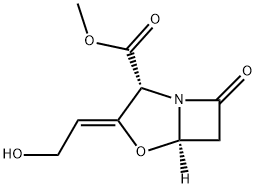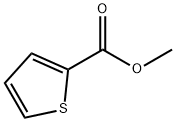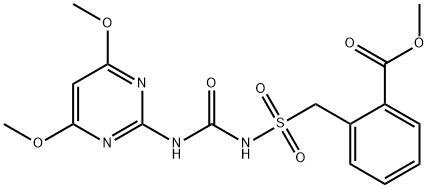Pentaerythritol tetraacrylate
Synonym(s):2,2-Bis[[(1-oxo-2-propenyl)oxy]methyl]-1,3-propanediyl ester;Tetramethylolmethane tetraacrylate
- CAS NO.:4986-89-4
- Empirical Formula: C17H20O8
- Molecular Weight: 352.34
- MDL number: MFCD00015334
- EINECS: 225-644-1
- SAFETY DATA SHEET (SDS)
- Update Date: 2025-12-17 09:50:40

What is Pentaerythritol tetraacrylate?
The Uses of Pentaerythritol tetraacrylate
PETA can be used in the synthesis of gel polymer electrolyte for the fabrication of lithium-sulfur batteries.
What are the applications of Application
Pentaerythritol tetraacrylate is a crosslinking monomer
General Description
Pentaerythritol tetraacrylate (PETA) is a hydrophobic tetrafunctional monomer that is majorly used as a crosslinking agent that facilitates an improvement in the surface morphology of the polymeric material. It can be synthesized by the suspension of pentaerythritol in the solution of triethylamine and dichloromethane.
Properties of Pentaerythritol tetraacrylate
| Melting point: | 18°C |
| Boiling point: | 450.3±40.0 °C(Predicted) |
| Density | 1.19 g/mL at 25 °C (lit.) |
| refractive index | n |
| Flash point: | >230 °F |
| storage temp. | Amber Vial, Refrigerator, Under inert atmosphere |
| solubility | Chloroform, Methanol (Sparingly) |
| form | Solid |
| color | Colourless Waxy |
| Stability: | Light Sensitive |
| CAS DataBase Reference | 4986-89-4(CAS DataBase Reference) |
| EPA Substance Registry System | Pentaerythritol tetraacrylate (4986-89-4) |
Safety information for Pentaerythritol tetraacrylate
| Signal word | Warning |
| Pictogram(s) |
 Exclamation Mark Irritant GHS07 |
| GHS Hazard Statements |
H315:Skin corrosion/irritation H317:Sensitisation, Skin H319:Serious eye damage/eye irritation |
| Precautionary Statement Codes |
P261:Avoid breathing dust/fume/gas/mist/vapours/spray. P264:Wash hands thoroughly after handling. P264:Wash skin thouroughly after handling. P272:Contaminated work clothing should not be allowed out of the workplace. P280:Wear protective gloves/protective clothing/eye protection/face protection. P302+P352:IF ON SKIN: wash with plenty of soap and water. P305+P351+P338:IF IN EYES: Rinse cautiously with water for several minutes. Remove contact lenses, if present and easy to do. Continuerinsing. |
Computed Descriptors for Pentaerythritol tetraacrylate
New Products
4,4-Difluoropiperidine hydrochloride tert-butyl 9-methoxy-3-azaspiro[5.5]undecane-3-carboxylate Indole Methyl Resin N-Isopropylurea N,N-Dicyclohexylcarbodiimide(DCC) MELDRUMS ACID 5-METHYLISOXAZOLE-4-CARBOXYLIC ACID Magnessium Bis glycinate Zinc ascorbate 1-bromo-2-butyne 2-acetamidophenol 9(10H)-anthracenone Erythrosin B, 4-Piperidinopiperidine 2-((4-morpholinophenylamino) (methylthio) methylene) malononitrile 2,4-dihydroxybenzaldehyde 3-(4-morpholinophenylamino)-5-amino-1H-pyrazole-4-carbonitrile Methyl 2-methylquinoline-6-carboxylate 2,6-dichloro-4-nitropyridine 4-Bromo-2-chlorobenzonitrile 2-(benzylamino)acetic acid hydrochloride 4-(tert-Butoxycarbonylamino)but- 2-ynoic acid 3,4-dihydro-2H-benzo[b][1,4]dioxepine 1-Phenyl-1-cycloprppanecarboxylicacidRelated products of tetrahydrofuran
![PENTAERYTHRITOL TETRARICINOLEATE 10G [R]](https://img.chemicalbook.in/)







You may like
-
 Pentaerythritol tetraacrylate CAS 4986-89-4View Details
Pentaerythritol tetraacrylate CAS 4986-89-4View Details
4986-89-4 -
 Pentaerythritol Tetraacrylate (stabilized with MEHQ) CAS 4986-89-4View Details
Pentaerythritol Tetraacrylate (stabilized with MEHQ) CAS 4986-89-4View Details
4986-89-4 -
 Pentaerythritol tetraacrylate 80% CAS 4986-89-4View Details
Pentaerythritol tetraacrylate 80% CAS 4986-89-4View Details
4986-89-4 -
 Pentaerythritol tetraacrylate CAS 4986-89-4View Details
Pentaerythritol tetraacrylate CAS 4986-89-4View Details
4986-89-4 -
 3-(4-amino-1-oxoisoindolin-2-yl)-1-methylpiperidine-2,6-dione 98%View Details
3-(4-amino-1-oxoisoindolin-2-yl)-1-methylpiperidine-2,6-dione 98%View Details -
 20677-73-0 (2,2-diethoxyethyl)methylamine 98%View Details
20677-73-0 (2,2-diethoxyethyl)methylamine 98%View Details
20677-73-0 -
 3-(4-(hydroxyamino)-1-oxoisoindolin-2-yl)piperidine-2,6-dione 98%View Details
3-(4-(hydroxyamino)-1-oxoisoindolin-2-yl)piperidine-2,6-dione 98%View Details -
 57381-49-4 2-bromo-4-chlorobenzonitrile 98%View Details
57381-49-4 2-bromo-4-chlorobenzonitrile 98%View Details
57381-49-4
Statement: All products displayed on this website are only used for non medical purposes such as industrial applications or scientific research, and cannot be used for clinical diagnosis or treatment of humans or animals. They are not medicinal or edible.
